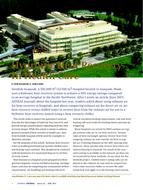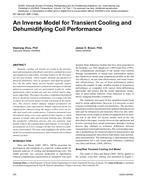Click here to purchase
Builders of the occupied environment have been trending for some time toward more sustainable, effective and energy efficient systems. Building Officials, as administrators of the Building Code, ensure compliance of the built environment to those Codes and to the Referenced Publications they contain. But when we consider innovative designs and technologies, is that good enough anymore? Is it working? The role of Building Codes has long been meant to ensure, in one fashion or another, occupant health, safety and access as well as fire and structural protection. But, Building Codes are changing. No longer to simply consider public safety on “traditional” designs and forms of construction, Codes are taking on a role in regulating, from the occupant safety perspective, the use of energy, primarily its loss and/or gain (read: conservation), within our living, recreational, and work environments. Added to that, code developers also address the use of energy in all its forms within these structures. Unlike in the past, technologies and methodologies evolve and mutate much more rapidly than do the codes. Code development cannot remotely be expected to maintain the pace. No where can this role be more evident, or more necessary, than in colder climates. So how can regulators move tangentially from the routine “code cycle” and consider these methods and technologies? It doesn’t, or shouldn’t, stop with a performance based system.
Citation: Cold Climate Conference, 2012
Product Details
- Published:
- 2012
- Number of Pages:
- 7
- File Size:
- 1 file , 760 KB
- Product Code(s):
- D-CCC12-23


